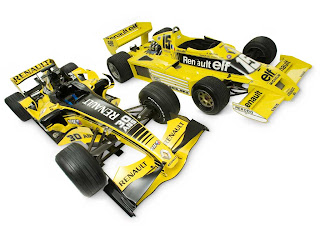 With a new track layout awaiting the drivers at the Silverstone this weekend, there's been plenty of homework for all the teams to do, as Renault explain. The circuit is now 745 metres longer and lap times will be around the 90-second mark, some 10 seconds slower than last year. Over the past few months, and the team's engineers have carried out hundreds of simulations to get to grips with the challenge ahead.
With a new track layout awaiting the drivers at the Silverstone this weekend, there's been plenty of homework for all the teams to do, as Renault explain. The circuit is now 745 metres longer and lap times will be around the 90-second mark, some 10 seconds slower than last year. Over the past few months, and the team's engineers have carried out hundreds of simulations to get to grips with the challenge ahead.In fact, simulation work has become an essential tool for any Formula One team, even when preparing for circuits we've been racing on for years. Using complex computer models, it allows the engineers to evaluate set-up the options before arriving at the circuit in order to maximise the track time available during free practice.
"We received the circuit map showing the new Silverstone layout about three months ago," explains Nick Chester, Renault's head of the performance systems. "The first step was to digitise the map and add a driving line to the circuit, which we obviously had to estimate for the new part of the track. Then we started evaluating different settings on the virtual car, changing parameters such as wing levels, suspension and settings to gear ratios to try and work out a good base set-up for the start of the weekend."
So what impact will the five new corners have on the car's set-up this weekend?
"In terms of downforce levels, it's difficult to make a comparison with last year because the car has evolved so much, but we're not expecting a massive change to the set-up," says Renault’s chief race engineer, Alan Permane. "Our simulations show that the average speed will be slightly higher at 230 km/h compared to 227 km/h in 2009, and the percentage of the lap spent at full throttle has also increased from 69 percent to 70 percent."

No comments:
Post a Comment